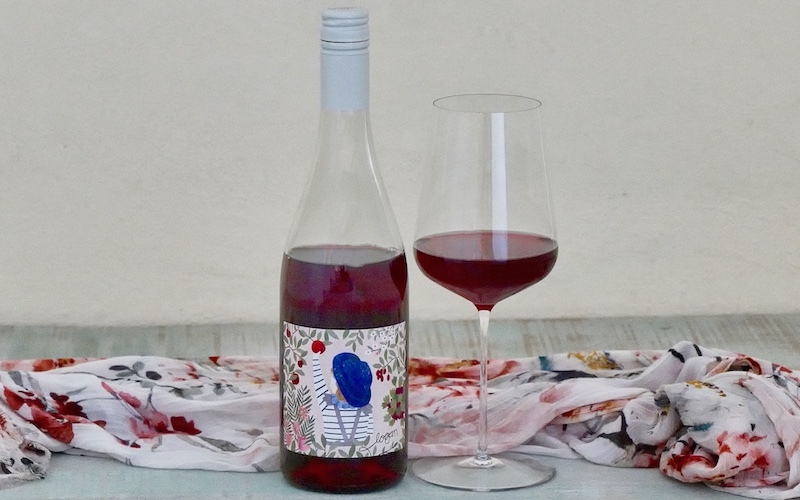How do you like your pinot: black, grey, white or speckled? Sparkling, still, red, white or rosé? Perhaps a serious Burgundy or a cheeky little blanc de noir? Confused? Don’t be, here’s everything you need to know about the pinot grape family one of the world’s most versatile (and delicious) families of grapes.


The pinot grape family descends from a very old grape variety, which means it’s had plenty of time to mutate. Likely pinot noir came first and mutated into pinot blanc, pinot gris and pinot meunier, to use their French names. The name ‘pinot’ may come from the pinecone-like appearance of the grape clusters, with the noir (black), blanc (white) and gris (grey) referring to the colour of the grapes. Though pinot gris is more of a coppery colour between ‘white’ and ‘black’, thus the ‘grey’ designation. Each mutation is also known by Italian and German names, just to complicate things further. A quick look at five of my favourite Australian pinots will help explain this grape family further. Scroll down to the FAQ below for more details and for a delicious duck recipe, perfect with any member of the pinot grape family.

Pinot Gris Curly Flat Macedon Ranges (Vic)
French pinot gris is rich and aromatic, while in Italy (where it’s called pinot grigio) it’s leaner and crisper; Australia uses the names interchangeably. Curly Flat pinot gris walks the line. It’s aromatic with a crisp, creamy, savoury finish. The grey skins can add a hint of colour to some wines. German: Grauburgunder (grey Burgundy).

Pinot Blanc Granite Hills Macedon Ranges (Vic)
A classic grape of France’s Alsace region, pinot blanc is called pinot bianco in Italy and Weissburgunder (white Burgundy) in Germany. Like all pinots it prefers a cooler climate. It’s less common in Australia than other members of the pinot grape family. Granite Hills pinot blanc is a cracker, with fragrant honeysuckle, pear notes and a refreshing crisp finish.

Pinot Meunier Murdoch Hill The Surrey Adelaide Hills (SA)
Meunier means ‘miller’, as the speckled leaves of this lesser known pinot look flour-dusted. Most commonly blended with pinot noir and chardonnay in Champagne, single varietal versions are rare. The Surrey balances cherry notes with forest floor in a delicious soft red wine. German: Schwarzriesling (black riesling).

Pinot Noir Grey Sands Blanc de Noir Tamar Valley (Tas)
Best known as French red Burgundy, pinot noir can also be sparkling, rosé or even a still white. Named for white Champagne made from red grapes (literally ‘white from red’), Grey Sands blanc de noir has a faint blush, slightly funky nose and savoury finish. Italian: pinot nero; German: Spätburgunder (late Burgundy).

Pinot Blend Logan Clementine Blushing Minnie Pinots Orange (NSW)
Left on skins for a while, pinots noir, meunier, and even gris, produce great rosés. It’s not uncommon to combine them, as happens in this blend of noir and meuniere. Don’t let the dark cherry colour and aroma fool you, this is rosé with substance and a food-friendly dry finish.
Updated 10 Dec 2024






Pinot may refer to various members of the pinot grape family: pinot noir, pinot blanc, pinot gris, pinot meunier.
Pinot noir and pinot meunier are red grapes, while pinot blanc and pinot gris are white grapes. They can be used to produce red, white or rosé wines that are still or sparkling.
People often ask ‘are pinot gris and pinot grigio the same thing?’ Yes they are. This grapes have coppery coloured skins, neither ‘white’ nor ‘black’.‘Grigio’ is the Italian word for grey while ‘gris’ is the French word, suggesting somewhere in between white and black.
The skin of pinot gris is slightly coppery in colour, giving a pink blush to wines that aren’t stripped of colour to remove it.
Most red wines made from pinot noir are light to medium bodied. Many lend themselves well to a light chilling, especially in summer. See more on Chilled Red Wines here.
Burgundy, one of the most famous wine growing regions in France, is best known for wines made from pinot noir. Burgundy is the region, pinot noir is the grape. So, is Burgundy pinot noir? Yes it is.
Only three grapes are allowed in the production of the famous sparking wines of the Champagne region of France: chardonnay (a white grape) and, perhaps surprisingly, two red grapes, pinot noir and pinot meuniere.
Blanc de noir literally means ‘white from red’. This term is most commonly used in Champagne to refer to a white Champagne made from one or both of the two red grapes permitted in the region: pinot noir and pinot meuniere. By running the juice off the skins as soon as the grapes are crushed, winemakers can produce a white wine from red grapes.
– pinot blanc (French); pinot bianco (Italian); Weissburgunder (German)
– pinot gris (French); pinot grigio (Italian); Grauburgunder (German)
– pinot meunier (French); meunier (Italian); Schwarzriesling, Müllerrebe, or Müller-Traube (German)
– pinot noir (French): pinot nero (Italian); Blauburgunder or Spätburgunder (German)